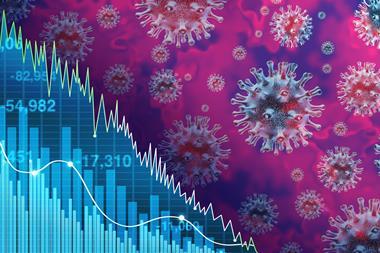The insurer’s attritional loss ratio in motor improved by 17.9 percentage points therefore it has reinstated its dividends that it previously halted in April, however it remains cautious given the uncertainty of the pandemic
Direct Line has reported a drop in motor claims in its 2020 half year financial results.
The current year loss ratio in motor improved by 17.9 percentage points to 65.5% (H1 2019: 83.4%), with this it has reinstated its dividends.
The Covid-19 pandemic has a “broadly neutral” effect on the group’s operating profit. This is due to additional travel and business interruption claims, as well as a decrease in its investment asset returns being offset by “favourable claims frequencies” in both motor and commercial lines.
Penny James, chief executive at Direct Line Group said: “Despite the significant disruption caused by Covid-19 we have continued the trading momentum we saw at the end of 2019, growing direct own brands by 2% and improving the quality of our earnings with an improved current-year loss ratio.
“We have also demonstrated financial resilience in the face of Covid-19 disruption, which has enabled us to declare our 2020 interim dividend as well as a catch-up of our cancelled 2019 final dividend.”
As well as the group halting travel insurance sales back in March, along with Aviva.
Great stability
Direct Line reported “greater stability” in the financial markets as well as more certainty about claims costs on business lines that have been negatively impacted by the pandemic.
Motor claims frequency reduced significantly during the early stages of lockdown and, while there has been an increase since lockdown restrictions have been eased, frequency remained below expected levels.
Higher levels of claims severity were experienced during the lockdown period following lengthening of repair times resulting in higher credit hire costs.
The Group continued to assume its long-term underlying view of claims inflation in the range of 3% to 5%, albeit with higher levels of claims severity offset by lower frequency. Prior-year reserve releases were £22.7m lower year-on-year at £83.4m as they continued to reduce in line with expectations.
The board accepted that the current circumstances are “exceptional” although normally it would expect the group to operate around the middle of its solvency capital ratio risk appetite range of 140% to 180%.
Back in April this year, James was focused on cutting costs and leveraging recent investments in technology, but the pandemic had upset the timing of these slightly.
Then its Solvency II ratio capital ratio stood at around 176% on 31 March, after accounting for the suspension of the group’s share buyback programme, of which £29m of a planned £150m had been completed.
But its shares hit their highest since March and were up 7.5% at 330.7p.
Meanwhile in May, Direct Line reported a drop in motor claims, this time at 70%.
In June, the group issued a £260m of Tier 2 debt to secure its longer-term finances at a 4.0% coupon.
But strong capital generation during H1 which it said reflected the group’s performance during H1 delivered a solvency capital ratio on 30 June 2020 of 213% before dividends and 192% after the interim and special dividend was declared.
Cautious approach
It stated that the uncertainty surrounding Covid-19 coupled with other factors such as Brexit, has led the board to make the decision for the insurer to take a cautious approach when considering liquidity and the distribution of solvency capital.
Although the board said it would keep the appropriate level of capital and liquidity under review as the pandemic, Brexit and other uncertainties unfold.
Read more…Aviva, RSA, Direct Line and Hiscox suspend dividend payments amid Covid-19
Not subscribed? Become a subscriber and access our premium content













































No comments yet